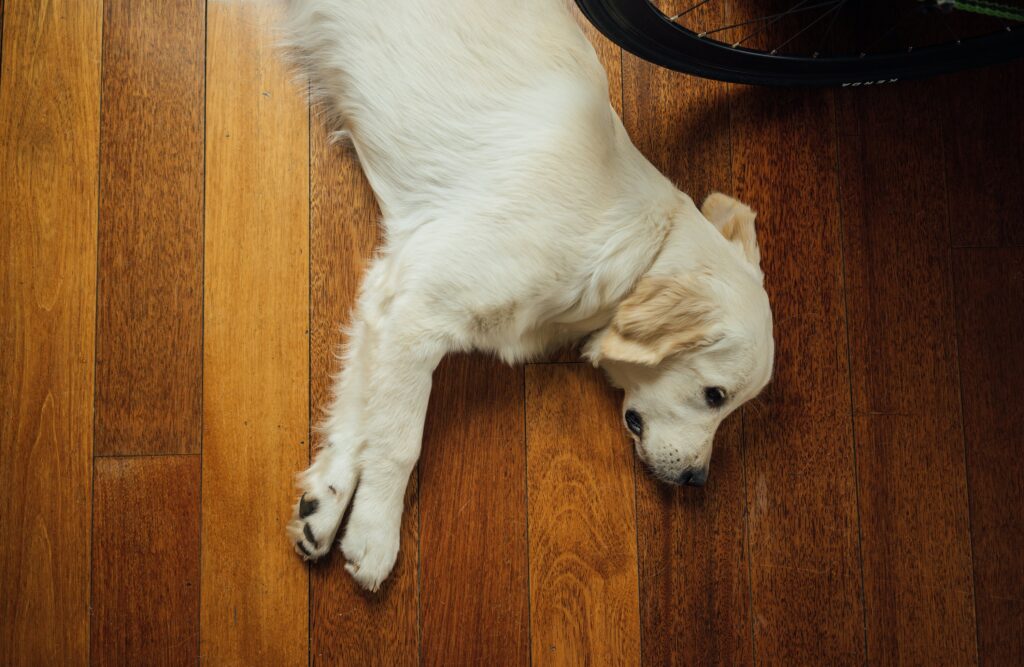Traditionally, the main flooring options are either concrete or tiling. However, thanks to improvements in the construction industry, more options are available. You can easily adopt wooden, natural stone floors, etc. As a homeowner, one of the options you can consider is parquet wooden flooring.

What Is Parquet Flooring?
From the name itself, this solution is made of wood. What makes it distinctive is its geometric and angular appearance. It comes in various forms and designs like herringbone.
Installing parquet wooden flooring is quite easy if you’ve previously done the installation. However, it might prove challenging for a first-timer. If you’re wondering how to install parquet wood flooring, this article will be your guide. Read on to know more:
Prepare Your Subfloor
In this case, the subfloor is the surface on which you’ll lay your wooden parquet. For a successful installation, it’s advisable to ensure the subfloor is made of concrete or wood. These two will bond well with your parquet. Then, make sure to prepare your subfloor before installing the parquet floor.
First, you have to clean it. Cleaning the subfloor involves removing debris and floor finishes, such as vinyl, paints, and sealants. You must ensure the floor is plain since any dirt or debris will likely show over time on your wood parquet after installation.
Once you clean up the subfloor, here’s what you should do:
- Check the floor for any nails.
- If there are existing nails on your floor, make sure they aren’t protruding. Otherwise, they’ll damage your parquet flooring, making it a waste of investment.
- If the nails are rough or sharp at their tip, smoothen the surface to ensure they don’t scratch your wooden flooring.
If your subfloor is damaged, you have to repair or replace it accordingly before installing the parquet. Your parquet won’t meet your needs efficiently if the subfloor is substandard.
Level The Subfloor
Levelling your subfloor means making it flat. A flat surface is essential in ensuring the final outlook of your wood parquet is pristine, without any bumps or depressions.
To level this surface, start by inspecting it. Identify any dents, holes, bumps, or depressions on your subfloor. For the bumps, scram them off, and use a cement levelling mixture to fill any holes or dents. Also, apply the levelling mixture if you have nails on the subfloor that form a depression above them.
Once you’ve covered everything, it’s advisable to sand the floor. Sanding smoothes everything out, ensuring your final surface is flat and smooth, ready for your parquet.
Get The Measurements Right
With wooden parquet, planning involves identifying how you’ll lay the wooden strips. You can only get this right by measuring.
To measure the subfloor, mark the centres of each of your walls and join them using chalk. The result will be four square shapes. The intersection of these lines should be the starting point of laying your parquet in each direction. Most first-timers make the mistake of using the lengths of their walls as starting points. This shouldn’t be the case since most walls aren’t always straight.
Once you have the markings right, start laying your parquet with the whole ones first. At the end, next to the walls, you’ll likely need to cut your parquet for it to fit. It’s advisable not to cut any strip more than half. Also, consider leaving a 10mm or half an inch of space at the end of your walls. This margin will allow room for your wooden parquet to expand when the temperatures are high.
Bond The Parquet To The Subfloor
The bonding stage will determine the longevity of your flooring. There are two things you can use—nails or adhesives.
Should you opt for nails, ensure you purchase the right nails. The nails’ lengths should be such that it drives into your herringbone wooden parquet without protruding on the surface. The distance between a few inches into your subfloor and the thickness of your parquet should guide you appropriately. Also, make sure the nails you use don’t damage your wooden parquet.
If you want to use adhesives, make sure to choose the right one for the job. Most wooden parquet manufacturers will recommend the best adhesive to use for the installation. Others will sell the adhesive and the wooden parquet side by side to prevent issues on quality, making the buying process easier.
Alternatively, your wooden parquet vendor can advise you accordingly. As you use adhesive, you must time yourself. You don’t want the adhesive to dry out before placing your wooden parquet.
After applying the adhesive, you must align your parquet using a rubber mallet. Hit the parquet with minimal force to ensure all the parquet is on the same level. Once aligned, you’re done with the installation. However, make sure no one uses the floor for at least 24 hours.
Conclusion
Installing parquet wood flooring is not too complicated, even for a first-timer. But if you want peace of mind, you can always hire professionals to do the job instead. If you do choose to do the installation yourself, refer back to this guide to make sure you can do it right.